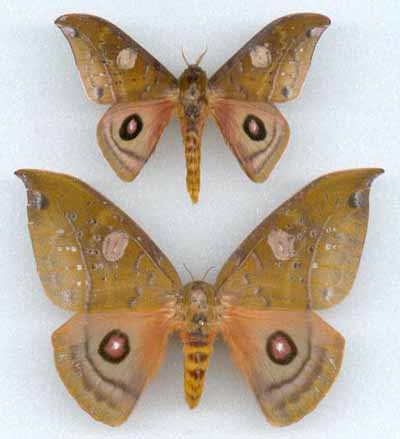Automerula beneluzi
Lemaire, new species

Automerula beneluzi (male), French Guiana, courtesy of
Eric van Schayck.
left side copied to right by Bill Oehlke
TAXONOMY:Superfamily: Bombycoidea, Latreille, 1802 |
"What.A.Wonderful.World" |
ON.OFF
<bgsound src="world.mid" LOOP=FOREVER>
